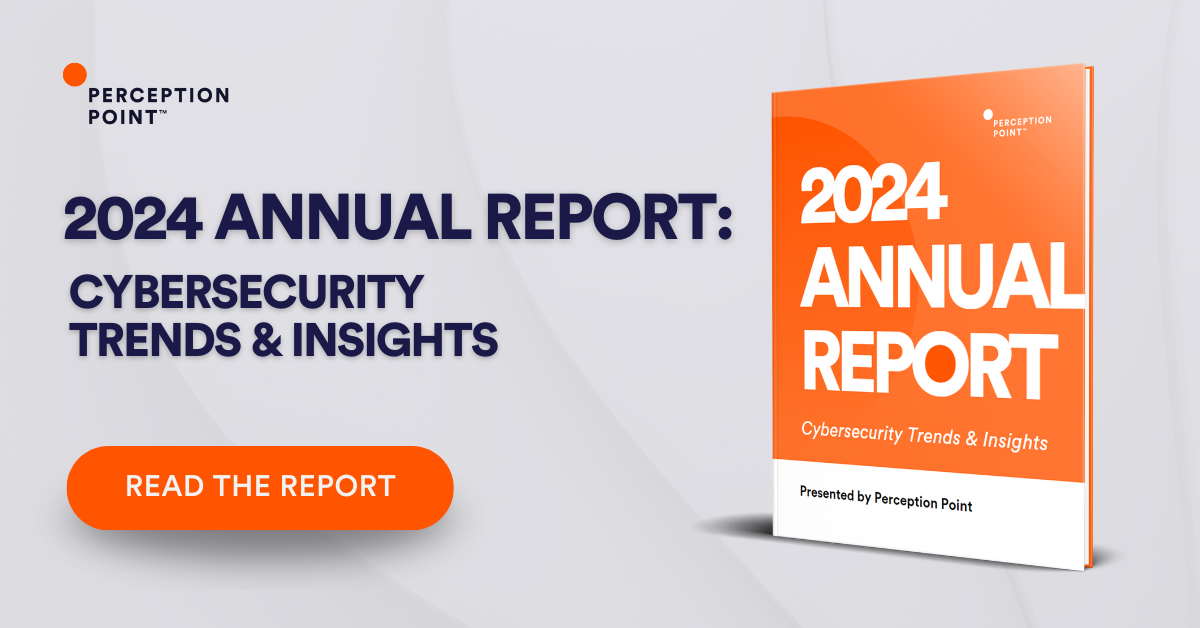What Is Workspace Security?
Workspace security refers to the strategies, tactics, and technologies used by businesses to protect digital workspaces from threats and vulnerabilities, for users that work both in the office or remotely. This could range from securing physical devices used for work, such as laptops and mobile phones, to safeguarding software applications and data, either in the cloud or on-premises.
Workspace security tools and solutions make it possible to protect sensitive data, networks, and business applications while ensuring an optimal user experience for business users. The goal is to ensure that no matter how employees access applications, documents, and other resources they need to do their job, sensitive business assets will be secure from cyber attacks.
This article is part of a series of articles about cybersecurity.
In this article
The Importance of Securing Digital Workspaces
Remote Work and Globalization
The rise of remote work and global organizations has expanded the digital workspace. Employees are now able to work from anywhere in the world, using a variety of devices to access company resources. While this has provided businesses with numerous benefits, such as increased flexibility and productivity, it has also introduced new security challenges.
When employees work remotely, they are often using their personal devices and home networks to access company data. These personal devices and networks may not be as secure as those within your business’s physical premises, leaving your data vulnerable to cyberattacks. The increased connectivity means that your employees are now accessing your systems from various locations around the world, introducing further security risks and the need for secure remote access.
Rise in Cyber Threats
Cybercriminals are becoming increasingly sophisticated, using advanced techniques to infiltrate your systems and steal your data. This means that businesses need to be constantly vigilant and proactive in securing their digital workspaces.
Cyber threats include malware, phishing attacks, ransomware, and data breaches, which can have devastating consequences for businesses, leading to significant financial losses, the exposure of sensitive data, and damage to your reputation.
Regulatory Compliance
Aside from the obvious security risks, businesses also need to consider the regulatory implications of their digital workspaces. In many jurisdictions, businesses are required by law to implement adequate security measures to protect their customers’ data. Failure to do so can result in fines or other penalties.
A major objective workspace security is to ensure that you are compliant with relevant regulations. This requires knowledge of the laws and regulations applicable to your business and the implementation of appropriate security measures to ensure compliance.

Tal ZamirCTO, Perception Point
Tal Zamir is a 20-year software industry leader with a track record of solving urgent business challenges by reimagining how technology works.
TIPS FROM THE EXPERTS
- Regularly conduct phishing simulations. Continuously test and train employees by running phishing simulations that evolve in complexity. This not only keeps employees vigilant but also provides insights into which individuals or departments are more susceptible, allowing for targeted education efforts.
- Adopt a comprehensive incident response strategy. Deploy an advanced email security solution that not only detects threats but also provides robust incident response capabilities. This allows for immediate containment and remediation of threats before they can spread across your digital workspace.
- Utilize behavioral analytics for anomaly detection. Integrate user and entity behavior analytics (UEBA) to detect anomalies in real-time. By learning the normal behavior of users and devices, UEBA can flag unusual activities that might indicate insider threats or compromised accounts, offering a proactive layer of defense.
Security Challenges of Digital Workspaces
Digital workspaces are, by nature, more difficult to secure than traditional IT environments. Here are the main challenges faced by organizations trying to secure their workspaces:
Remote Access
One of the major challenges in securing digital workspaces is managing remote access. When employees are working remotely, they need to be able to access your business’s systems and data. However, this remote access can also be exploited by cybercriminals to infiltrate your systems.
Examples of risks related to remote access include:
- VPN exploits: Cybercriminals can exploit vulnerabilities in outdated VPNs to gain unauthorized access to a network.
- Credential stuffing: Attackers use stolen account credentials to gain access to a user’s account, often relying on individuals reusing passwords across services.
Unmanaged Devices (BYOD)
The Bring Your Own Device (BYOD) trend, which involves allowing employees to work on their personal devices, poses another significant challenge. While it can offer convenience and flexibility for employees, it also introduces a host of security risks. Personal devices may not have the same level of security as company-owned devices, and they might also be used for non-work related activities that could expose them to malware and other threats.
Examples of risks related to BYOD devices include:
- Malware infection: A personal device could be infected with malware during personal use, and when connected to the company’s network, this malware could transfer to corporate systems.
- Lost or stolen devices: Personal devices containing sensitive corporate data can be lost or stolen, potentially leading to unauthorized data access.
Managed Devices
Managed devices refer to any endpoint devices within a corporate network that are centrally controlled and monitored by an organization’s IT department or a managed service provider. Securing and managing devices in corporate environments presents multifaceted challenges that demand attention and innovative solutions. Key obstacles include:
- Mobility: Ensuring security for devices that frequently move between locations and access company resources from various networks.
- Regulatory Compliance: Ensuring adherence to industry-specific regulations such as HIPAA and GDPR, adding complexity to device management.
- Balancing Security and Usability: Implementing stringent security measures without compromising user experience or productivity.
Shadow IT
Shadow IT refers to the use of software and hardware that are not officially sanctioned by the business. This can range from employees using unapproved apps to entire departments implementing their own IT solutions without the knowledge or approval of the IT department. Shadow IT can pose serious security risks as these unsanctioned solutions may not be secure and might not be covered by your business’s existing security measures.
Examples of risks related to shadow IT include:
- Data leakage: Employees might store sensitive data in unapproved cloud storage services with insufficient security measures, leading to data exposure.
- Compliance violations: Use of non-compliant software or cloud services could result in failing to meet legal or industry data protection standards.
Integration of Third-Party Applications
Integrating third-party applications into a company’s system can also pose security challenges. While these applications can provide valuable functionality, they can also introduce vulnerabilities. This is particularly true if these applications have access to sensitive data or systems.
Examples of risks related to third party applications include:
- API breaches: Insecure APIs for third-party apps can be exploited to gain unauthorized access to sensitive systems.
- Third-party vendor breaches: If a third-party application suffers a breach, attackers could potentially gain access to the data or systems it’s connected to within your company.
Digital Workspace Security Technologies and Tools
Here are some of the technologies organizations are using to overcome the challenges of workspace security.
Endpoint Security Solutions
Endpoint security solutions protect your network when accessed via remote devices like laptops or smartphones. They identify and manage the users’ activities, ensuring they don’t compromise the network’s security.
These solutions include the traditional antivirus software, but include several other layers of defense. In addition to detecting known threats, they monitor and block suspicious activity, defending your network from unknown threats. They can also provide firewalls, encryption, and application control, further bolstering your workspace’s security.
Email Security Solutions
Emails are a primary communication tool in most businesses. Unfortunately, they’re also a popular target for cybercriminals. Phishing attacks, malware, and spam emails can all lead to significant security breaches.
Email security solutions protect your business by securing and controlling incoming and outgoing emails. They filter out spam and phishing emails, block harmful attachments, and prevent data leakage. They can also encrypt sensitive emails, protecting your confidential information in transit.
Learn more about Perception Point email security
Mobile Device Management (MDM)
When implementing remote work and BYOD (Bring Your Own Device) policies, it is critical to manage and secure all the mobile devices used within your organization. Mobile Device Management (MDM) provides a solution to this problem.
MDM software allows you to manage, monitor, and secure employees’ mobile devices from a central location. It can enforce security policies, control access to specific apps, track device location, and remotely wipe data if a device is lost or stolen.
Data Loss Prevention (DLP)
Data Loss Prevention (DLP) tools are important for when other measures fail, and you need to react to a breach. They focus on protecting data at rest, in use, and in transit. They detect potential breaches or data exfiltration transmissions and prevent them by blocking transfers of sensitive data outside your organization.
DLP can help you comply with industry regulations, protect intellectual property, and prevent data loss. It can also provide analytical insights about potential threats and vulnerabilities, helping you improve your security measures over time.
Zero Trust Network Access (ZTNA)
In traditional security models, anyone inside the network is considered trustworthy. However, this approach leaves your business vulnerable to threats from within. Zero Trust Network Access (ZTNA) addresses this issue by treating every user and device as potentially untrustworthy, regardless of whether they’re inside or outside the network.
ZTNA continuously authenticates and authorizes every request, granting only the necessary access. This limits potential attack surfaces and prevents lateral movement within the network. Adopting a ZTNA model can significantly enhance your workspace’s security by providing more granular control over your network.
Secure Web Gateways
A Secure Web Gateway provides another layer of security. They monitor and control your organization’s web traffic, blocking threats before they enter your network. Similar to SSE, SWGs can filter out malicious content, enforce corporate and regulatory policy compliance, and prevent data leakage. They can also provide visibility into web traffic, helping you identify potential threats and trends, which RBI solutions do not offer.
Workspace Security with Perception Point
The workspace security market is expected to grow and become critical in the future. To help organizations be prepared, Perception Point delivers one platform that prevents malware, ransomware, APTs and zero-days from reaching your end users.
Advanced Email Security is an integrated cloud email security solution (ICES) that can replace SEGs. The solution cloud-native SaaS solution protects your organization against all threats using 7 layers of advanced threat detection layers to prevent malicious files, URLs, and social-engineering based techniques.
Advanced Browser Security adds enterprise-grade security to your organizations native browsers. The managed solution fuses browser protection technology with multi-layer advanced threat prevention engines which delivers the unprecedented ability to detect and remediate all malicious threats from the web, including phishing, ransomware, malware, APTs, and more. Multi-layered static and dynamic detection capabilities instantly detect and block access to malicious/phishing websites and prevent malicious file downloads of ransomware, malware, and APTs.
Advanced Threat Protection for Cloud Collaboration, File Sharing and Storage Applications, such as Microsoft 365 applications (OneDrive, SharePoint, Teams), Google Drive Box, AWS S3 buckets, Zendesk, Salesforce, and any of the other hundreds of apps out there, protects your organization with near real-time dynamic scanning. It does not tamper with files and does not impede on productivity.
An all-included managed Incident Response service is available for all customers 24/7 with no added charge. Perception Point’s team of cybersecurity experts will manage incidents, provide analysis and reporting, and optimize detection on-the-fly. The service drastically minimizes the need for internal IT or SOC team resources, reducing the time required to react and mitigate web-borne attacks by up to 75%.
Get a demo today!

Workspace security refers to the strategies, tactics, and technologies used by businesses to protect digital workspaces from threats and vulnerabilities. This could range from securing physical devices used for work, such as laptops and mobile phones, to safeguarding software applications and data, either in the cloud or on-premises.
The rise of remote work and global organizations has expanded the digital workspace. Employees are now able to work from anywhere in the world, using a variety of devices to access company resources. While this has provided businesses with numerous benefits, such as increased flexibility and productivity, it has also introduced new security challenges.
Cybercriminals are becoming increasingly sophisticated, using advanced techniques to infiltrate your systems and steal your data. This means that businesses need to be constantly vigilant and proactive in securing their digital workspaces.
Aside from the obvious security risks, businesses also need to consider the regulatory implications of their digital workspaces. In many jurisdictions, businesses are required by law to implement adequate security measures to protect their customers’ data.
Digital workspaces are, by nature, more difficult to secure than traditional IT environments. Here are the main challenges faced by organizations trying to secure their workspaces:
– Remote Access
– Unmanaged Devices (BYOD)
– Shadow IT
– Integration of Third-Party Applications
Here are some of the technologies organizations are using to overcome the challenges of workspace security:
– Endpoint Security Solutions
– Email Security Solutions
– Mobile Device Management (MDM)
– Data Loss Prevention (DLP)
– Zero Trust Network Access (ZTNA)
– Secure Web Gateways
























